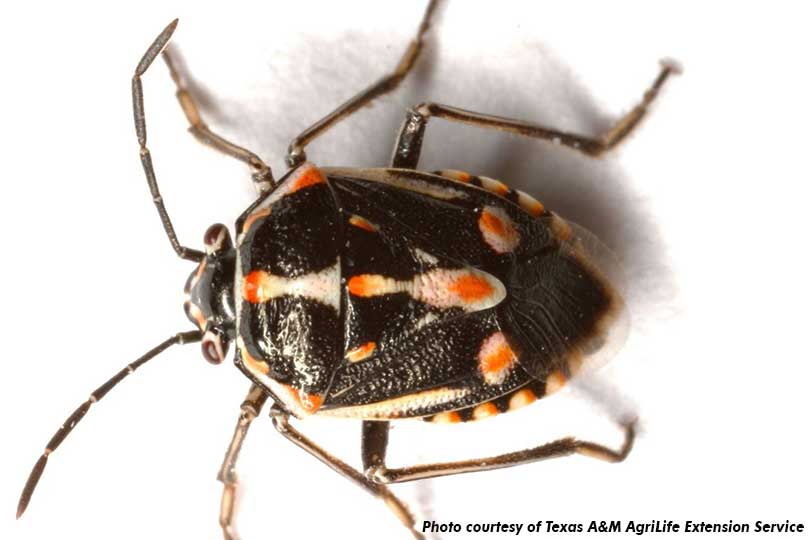The Bagrada bug, an invasive stink bug, has been detected in South Central Texas.
Texas A&M AgriLife Extension Service entomologist and integrated pest management specialist Molly Keck warns it can cause serious damage to crops, nurseries and home gardens.
The invasive stink bug has been slowly spreading through the southwestern U.S. for the past decade and has been reported in Hays County, according to Keck.
She said the adult Bagrada bugs have the same coloring as harlequin bugs, but are about one-third to one-half their size with smaller orange markings and no white markings.
The Bagrada bug is primarily a pest of cole crops in the mustard family, or Bassicas, including brassicaceous weeds such as wild mustard.
“The Bagrada bug prefers plants such as broccoli, cabbage, cauliflower, collards, kale, radishes and Brussel sprouts,” Keck told AgriLife Today. “However, it is also known to feed on cotton, Sudan grass and Bermuda grass.
“The bug has needle-like mouthparts used to penetrate and feed on plants and young seeds,” Keck said. “They can cause a range of damage from leaf spotting, wilting or stunting, which can result in the plant not producing a flower, heads not forming, or even death of the plant.”
Keck noted the plant is also capable of causing significant damage to young broccoli and cabbage plants.
The bugs have also been identified in the Austin area and there have been reports from residents who have home gardens or who tend community gardens, according to Keck.
Bagrada bugs gather on plants and lay their eggs one at a time in small clusters on the underside of leaves and stems or in soil beneath the plant. The eggs start out white and turn an orange-red as they get older. Young Bagrada bugs change color from bright orange-red to near black with red markings as they get older.
Keck said early detection is important as bug populations can build quickly, but can be difficult because they are small compared to other vegetable pests and may be easily overlooked until populations become large.
“It’s usually difficult to observe Bagrada bugs until there’s been some damage, so look carefully for damage like light green lesions, which are easier to spot than the insects during the early period of infestation,” Keck said.
More frequent monitoring for the bug may be necessary when temperatures rise about 75 degrees, as the bugs are typically more active and visible during the warmer parts of the day.
Control methods may include picking the bugs off by hand or using a hand-held vacuum cleaner to remove them from the plants, according to Keck. Pyramid traps baited with crushed sweet alyssum inside polypropylene bags can be used to catch and destroy these bugs, especially when in large numbers.
Weed control and planting transplants as opposed to seeds may reduce populations and damage by Bagrada bugs in larger production systems.
Keck said stink bugs are difficult to manage with insecticides and repeat applications are often necessary.
Pesticides with quick-acting contact activity such as pyrethroids may provide good short-term protection against Bagrada bugs feeding on emerging leaves and transplants, according to Keck. Once transplants become established, foliar sprays of pyrethroids and neonicotinoids should help prevent further feeding damage.

